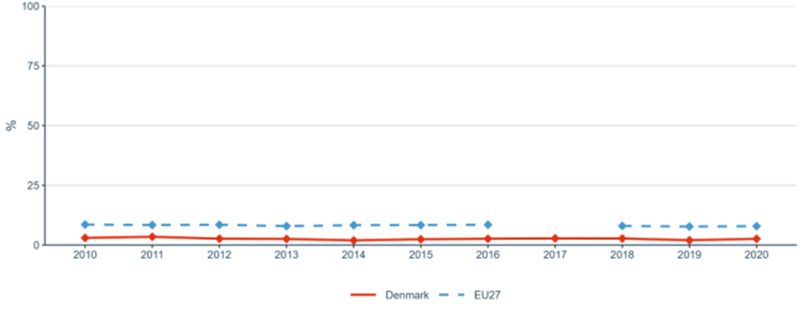ERA Country Report 2023
Denmark
Edited by Aishe Khalilova (UNU Merit)
as part of ‘Development of the ERA Scoreboard, the ERA Dashboard and the Regular Reports’ project for the European Commission, Directorate-General for Research and Innovation under Framework Contract N° 2018/RTD/A2/OP/PP-07001-2018 Lot 2 (EDAR)
Click here to download this country report![]()
- Table of contents
-
ERA Country Report 2023: Denmark
1. National context
1.1. Overview of the ERA policy agenda implementation
1.2. Policy context
2. Assessment of the Implementation of the ERA Policy Agenda and ERA Priorities
2.1. ERA Priority 1: Deepening a truly functional internal market for knowledge
2.2. ERA Priority 2: Taking up together the challenges posed by the twin green and digital transition and increasing society’s participation in the ERA
2.3. ERA Priority 3: Amplifying access to research and innovation excellence across the Union
2.4. ERA Priority 4: Advancing concerted research and innovation investments and reforms
3. Country-specific drivers and barriers
4. Final remarks
5. Bibliography
6. Annexes
6.1. Annex 1: Graphs
ERA Country Report 2023: Denmark
|
Key takeaways:
|
1. National context
1.1. Overview of the ERA policy agenda implementation
Denmark is an Innovation Leader according to the 2023 European Innovation Scoreboard. The country’s innovation performance is 37.6% above the EU. Denmark’s innovation performance has also been improving faster than that of the EU (16.0% versus 8.5% points), increasing the lead of Denmark over the EU.
The Danish R&I ecosystem is supported by high levels of investment and excellent scientific, digital and innovation achievements, as defended by the 2022 European Semester Report. These are reflected on the high-quality outputs in R&I areas such as publications and patents also related to the digital and green transitions, offering the country new opportunities in this regard. In addition to this, the 2023 European Semester Report highlights the importance of a solid public science base for maintaining the country´s scientific excellence.
Denmark has committed to 14 out of the 17 implemented Actions of the first ERA Policy Agenda. Measures to contribute to these actions are embedded into different strategies and plans, which are described in the next section.
1.2. Policy context
Multiple institutions are responsible for the development and implementation of R&I policies. The Ministry of Higher Education and Science (MHES) assists the government with the development of education, research and innovation policies. The Danish Agency for Higher Education and Science (DAHES)is the agency inside the MHES responsible for the implementation of government policies in the education, research, and innovation areas. Moreover, DAHES manages the State Educational Grant and Loan Scheme, while preparation and administration of grants for basic and strategic research and development and innovation are handled by the Danish National Research Foundation, Independent Research Fund Denmark, and Innovation Fund Denmark (IFD). All three are independent of the central government with their own mandate by law.
Additionally, there are three so-called development and demonstration programs for Energy, Environment and Food and Agriculture respectively under the Ministry of Climate, Energy and Utilities, the Ministry of Environment, the Ministry of Food, Agriculture and Fisheries (FVM). The Ministry of Industry, Business and Financial Affairs (MIBF) and agencies such as the Danish Business Authority, the Danish Board of Business Development and Denmark’s Export and Investment Fund provide grants, loans and investments mainly to Danish business in areas important for economic growth. Finally, the Ministry of Taxation is responsible for special tax schemes for research expenditures for companies as well as for research institutions and companies attracting scientists from abroad.
Denmark's approach to R&I is encapsulated in five main policy documents and strategies targeting specific focus areas within the ERA actions. The Strategy “Denmark - Ready to seize future opportunities” outlines Denmark’s objectives for future research and innovation. It focuses on two primary objectives: to ensure that Danish research reaches the highest international standards and that it maximises the benefits of research for the broader society. The national strategy “Green solutions of the future. Strategy for investments in green research, technology, and innovation” outlines a clear and long-term vision for green research and innovation, promoting strategic partnerships to address critical environmental challenges and enhance Denmark's position as a global leader in green technologies. The Danish government has demonstrated its commitment to quantum technology by announcing a dedicated investment of one billion DKK as the initial step in its new “Strategy for Quantum Technology: Part 1 – World-Class Research and Innovation”. It aims to ensure that Denmark maintains a leading position in quantum research, promotes innovation, and addresses global challenges in healthcare, the green transition, and cyber security through quantum advancements. Denmark's “Strategy for Quantum Technology: Part 2 – Commercialisation, Security and International Cooperation” marks a significant boost to the Danish quantum ecosystem, focusing on commercialisation, security, international partnerships, and the establishment of Quantum House Denmark, reinforcing the country's position as a leading hub for quantum technology development with a global perspective. In May 2022, the Danish government unveiled its “National Strategy for Digitalisation”, a comprehensive plan founded on 46 recommendations from the Danish Government Digitisation Partnership, aimed at fostering collaboration across various sectors to advance Denmark's digital development. The strategy encompasses nine visionary goals, encompassing enhanced cyber and information security, streamlined services for individuals and businesses, the promotion of digital technology to save time for welfare, and several other initiatives, positioning Denmark at the forefront of international digitalisation.
2. Assessment of the Implementation of the ERA Policy Agenda and ERA Priorities
The purpose of this section is to provide an overview of the implementation of the ERA Policy Agenda and its associated actions, as well as an assessment of Denmark’s progress towards the ERA priorities. The following data sources were used for this report: (a) quantitative data from the ERA Scoreboard and Dashboard; (b) policy reports (the 2023 European Semester Report for Denmark; the 2023 National Reform Program for Denmark); and (c) key Danish national documents on research, development, and innovation policies.
The quantitative information presents the most recent data available for the ERA Scoreboard and ERA Dashboard indicators. However, in some cases, the data available pre-dates the ERA Policy Agenda. This report will serve as a baseline for reporting in the future. Therefore, the longer-term trends covering the last ten years are presented. The indicators falling under each ERA priority are presented below, and the general indicators are outlined in Table 1. More detailed information on the data and graphs can be found in Annex 1.
| Indicator |
Most recent EU average |
Most Recent Metric |
| Gross Domestic Expenditure on R&D (GERD) as a percentage of GDP |
2.26 (2021) |
2.81 (2021) |
| Government Budget Allocations for R&D (GBARD) as a share of GDP |
0.76 (2021) |
0.92 (2021) |
| Researchers (in full-time equivalent) per million inhabitants |
4,483.4 (2021) |
7,708.3 (2021) |
| Business Enterprise expenditure on R&D (BERD) as a percentage of GDP |
1.49 (2021) |
1.7 (2021) |
Source: compiled by research team based on the ERA Scoreboard and ERA Dashboard indicators
2.1. ERA Priority 1: Deepening a truly functional internal market for knowledge
2.1.1. State of play in the implementation of the ERA Actions
In the context of ERA Action 1: Enable Open Science, including through the European Open Science Cloud (EOSC), measures stemming from Denmark’s National Strategy for Open Access (introduced in 2018) should support the “free access for all citizens, researchers and companies to all research articles from Danish research institutions financed by public authorities and/or private foundations”.
Furthermore, the National strategy for data management based on the FAIR principles was introduced in 2021. The strategy contributes to making Danish data easier to find, access, and share, which is a crucial prerequisite for taking part in the development of the European Open Science Cloud (EOSC). National stakeholders such as universities and research institutions have started implementing the strategy. Furthermore, a working group of national stakeholders coordinate measures that require national coordination and monitor progress.
For ERA Action 2: Propose an EU copyright and data legislative framework for research, the Digitalisation Fund has been earmarked to allocate DKK 125 million annually from 2022 to 2025. Its primary purpose is to provide support for specific digital projects that align with the recommendations of the Digitisation Partnership. The fund was established through the 2022 Budget Bill and includes a range of measures designed to promote a more environmentally friendly and digitally advanced business sector. These measures encompass an increased utilisation of public data, the integration of green solutions and new technologies within the public sector, and the establishment of a legal and ethical framework in the context of our increasingly digital world. The Digitalisation Fund consists of a total of 10 initiatives that span various domains, including digitisation in the public sector, digitalisation in businesses, eco-friendly digital endeavours, and initiatives that emphasise the importance of data ethics and legislation.^
In relation to ERA Action 3: Reform the Assessment System for research, researchers and institutions, the Danish Ministry of Higher Education has contributed to the EU analysis of potential legal barriers to reforming Research Assessment. Furthermore, the Ministry has urged the association of Danish Universities to initiate a dialogue with the universities on whether they wish to participate in the Coalition for Advancing Research Assessment (CoARA). The Ministry has also contributed to Universities Denmark´s working group on the merit of skills and experience in knowledge dissemination, introducing the ERA priority Reform for Research Assessment into their work. Independent Research Fund Denmark (DFF) has been in dialogue with other funds to stimulate their interest in participating in CoARA.
On ERA Action 4: Promote attractive research careers, talent circulation and mobility, Danish Universities, the association of universities in Denmark, has adopted in 2023 several common principles and recommendations that will set the direction for the work with gender diversity, career paths and inclusive academic environments at universities in the future.
In relation to ERA Action 5: Promote gender equality and foster inclusiveness, the Gender Equality Act entered into force in 2000 stating that public authorities shall seek to promote gender equality and incorporate gender equality in all planning and administration within their scope. Gender equality is outlined in the legislation as no less than a 60/40 divide between men and women. In 2020, numbers of women in university management had generally increased, but the percentage of people in top university management who were women remained low at only 24%. Only two universities had women making up more than 40% of top management, with women making up 25% or less in the other institutions.^ In 2023, DAHES published the fourth report on gender distribution in research across the different career stages. Furthermore, the Independent Research Fund Denmark has a programme called “Inge Lehmann-programmet”, where female applicants are selected over male applicants in case of equal qualifications since 2020.
The Ministry of Digitalisation and Gender Equality was established at the end of 2022, along with a new action plan titled "Room for diversity in the community LGBT+ action plan 2022-2025", which takes a broad approach with 39 initiatives to strengthen LGBT+ people's rights and equality, including anti-bullying strategies for primary schools, secondary education, and preparatory basic education. Moreover, the Ministry presents an action plan on gender equality for 2023, which stipulates the government's gender equality efforts and planned initiatives for the coming year.
Regarding ERA Action 6: Protect academic freedom in Europe, the University Act stipulates in paragraph 2 subsection 2 that “The university has academic freedom and the university must safeguard the academic freedom of the university and the individual and also the ethics of science”. The institutions of higher education have long traditions of freedom and autonomy. The Ministry of Higher Education and Science lays down overall regulations for the institutions of higher education. These include regulations concerning the admission of students, the structure of studies, the programs offered, the awarding of degrees and the appointment of teachers and academic staff. The individual institutions are then responsible for drawing up and updating their study programs indicating the scope, duration, form, course content, and syllabus description.
Related to ERA Action 8: Strengthen research infrastructures, the Danish Roadmap for Research Infrastructure 2020 included 16 proposals for new national research infrastructures. In 2020, Denmark participated in eight large international research infrastructures projects.^ In 2020, Denmark also participated in several ESFRI research infrastructures including CLARIN, EPOS, ESS Social or ACTRIS among others.
For ERA Action 9: Promote international cooperation, the Innovation Fund Denmark has an international plan running from 2022 to 2025, that proposes four important action areas for international collaborations: (1) The national Grand Solutions program, which may ask overseas partners to participate; (2) Horizon 2020 strategic thematic programmes, Nordic cooperation, EUREKA, and GlobalStars; (3) Eurostars for SMEs with a high level of research and (4) Bilateral collaboration with non-European countries.^ Furthermore, IFD has an Action Plan 2022-2025 Innovation Fund Denmark International Strategy as a part of its international strategy. Additionally, both International Research Fund and Danish National Research Foundation have special actions stipulated in their strategies.
To foster international collaboration, MHES, in collaboration with the Ministry of Foreign Affairs, has gradually created eight Innovation Centres overseas to assist Danish enterprises and researchers. MHES also maintains a DANRO office in Brussels. DANRO is a satellite office of the Danish Agency for Science and Higher Education, which also serves as the national contact point for the European Framework Program for Research and Innovation. EuroCenter, the second Brussels office, also promotes and enhances Danish involvement in Horizon2020 programs, which are primarily focused on business advisory services.
2.1.2. Progress towards achieving ERA Priorities
Measuring progress against Sub-priority 1.1: Open Science, the share of open access publications (Figure 5 in Annex 1) is above that of the EU-27 in 2019 (48.1% versus 39.2%) and has also increased at a greater rate (+8.6%-points since 2009) when compared to the EU-27 (+5.2%-points). Denmark is among the top-10 performing EU Member States using this indicator. For Sub-priority 1.2: Research infrastructures, Denmark participated in 18 European research infrastructures in 2021, compared to an average of 15.5 for all Member States (Figure 6 in Annex 1).
In relation to Sub-priority 1.3: Gender equality, equal opportunities for all and inclusiveness, Denmark has shown mixed performance relative to the EU-27 on the indicators used for monitoring progress on this sub-priority. Denmark performed below the EU average on the share of women in grade A positions in higher education institutes (Figure 7 in Annex 1) (22.5% versus 27.2% in 2018), even though since 2010 this share has increased more for Denmark (+6.5%-points) than for the EU-27 (+4.9%-points). Denmark performed slightly above the EU-27 average in 2020 on the share of scientific papers with mixed gender authorship (Figure 9 in Annex 1) (63.9% versus 62.7%), with a strong increase of 11.3%-points since 2010. Denmark performed slightly below average in 2018 on the share of women in authorships of the top 10% most-cited publications (Figure 10 in Annex 1) (31.0% versus 32.6%). Denmark performs well on the Women in Digital Index with a score of 68.6 in 2022 which is well above that of the EU-27 (57.1) (Figure 11 in Annex 1). The share of women among doctoral graduates by narrow fields of Science, Technology, Engineering and Mathematics (STEM) is below that of the EU-27 in 2020 (34.2% versus 37.3%) but has increased from 31.5% in 2013 (Figure 8 in Annex 1).
Regarding Sub-priority 1.4: Researcher’s careers and mobility and research assessment and reward systems, Denmark is performing well on Job-to-job mobility of Human Resources in Science and Technology (Figure 14 in Annex 1) with a percentage share of 10.7% in 2020 compared to 6.8% for the EU-27. A comparison with performance in 2010 would suggest a slightly stronger increase of 1.4%-points compared to the 1.3%-points increase for the EU-27. The share of foreign doctorate students as a percentage of all doctorate students has grown slightly from 2013 to 2020 in Denmark and remained consistently above the EU-27 average (Figure 12 in Annex 1). The number of new doctorate graduates (25-34) per 1,000 inhabitants (Figure 13 in Annex 1) in Denmark has remained above the EU-27 average from 2015-2020; however, there has been a steady decrease since 2015, with Denmark lowering its lead against the EU-27.
In relation to Sub-priority 1.5: Knowledge valorisation, the share of public-private scientific co-publications per million inhabitants is much higher in Denmark (699.0 in 2021) than in the EU-27 (133.9) (Figure 15 in Annex 1). Denmark is also performing well on patent applications as measured by the number of PCT patent applications per GDP in billion Euros (Figure 16 in Annex 1). Denmark is performing above the EU-27 average on the share of innovating firms collaborating with higher education institutes and/or public research organisations (Figure 19 in Annex 1) (15.5% versus 13.3% in 2020). Compared to 2010, this share has increased by about 1.1%-points, less than half of the increase for the EU-27 (2.4%-points). The share of researchers in the business sector (Figure 17 in Annex 1) is higher in Denmark (58.2%) than in the EU-27 (55.3%) but has decreased over time from a share of 60.8% in 2010. The number of researchers in the business sector per thousand employment (Figure 18 in Annex 1) has increased from 12.6% in 2010 to 13.0% in 2020 and is almost double that of the EU-27 (6.9%).
For Sub-priority 1.6: Scientific leadership, Denmark is one of the top-3 performing EU-27 Member States on the share of top-10% most-cited scientific publications (Figure 20 in Annex 1), However, for Denmark this share declined very strongly (-2.6%-points) since 2010, compared to only -0.3%-points for the EU-27. These results show that Danish scientific leadership is weakening over time. Denmark is scoring above the EU-27 on the Academic Freedom Index (Figure 21 in Annex 1), but its score has decreased from 0.958 in 2010 to 0.910 in 2022.
Lastly, in relation to Sub-priority 1.7: Global engagement, Denmark is one the two best performing Member States on international co-publications with foreign partners per 1,000 researchers (Figure 22 in Annex 1). Since 2010, the number of international co-publications with foreign partners per million inhabitants more than doubled. However, Denmark has consistently performed below the EU-27 average for the number of European and international co-patenting in EPO applications at national and EU level (Figure 23 in Annex 1).
2.2. ERA Priority 2: Taking up together the challenges posed by the twin green and digital transition and increasing society’s participation in the ERA
2.2.1. State of play in the implementation of the ERA Actions
In relation to ERA Action 10: Make EU research and innovation missions and partnerships key contributors to the ERA, the 2023 European Semester Report finds that “Denmark’s Recovery and Resilience Plan (RRP) enables it to further mobilise the strengths of its R&I system to accelerate the twin” green and digital transition. Green research and innovation initiative of the RRP focuses on four main missions: 1) carbon capture and storage; 2) green fuels for transport and industry; 3) climate and environmentally friendly agriculture and food production; 4) reuse and reduction of plastic waste via circular economy. In 2022, the Agency for Digital Government was merged into the Ministry of Digital Government and Gender Equality. Large portions of the Danish digital service infrastructure as well as the strategies of the Danish Government for growing the digital public sector are implemented by the Agency. In 2021, the Danish Government Digitisation Partnership presented 46 recommendations for how to harness the possibilities of digital technologies in the Danish society. The Danish government released the National Strategy for Digitalisation in May 2022, based on these inputs. According to the 2023 European Semester Report, the "digitalisation strategy of May 2022 aims to improve and strengthen digital skills of individuals, businesses, and the public sector."
The Danish Government’s National Strategy for Cyber and Information Security 2022-2024 has been adopted to help enhance technological resilience; secure the protection of critical government ICT systems; and improve the knowledge and skills of residents, businesses, and authorities. The National Strategy for Artificial Intelligence sets the roadmap for how Denmark can be a front-runner in responsible development and use of AI to benefit individuals, businesses, and society as a whole.
For ERA Action 11: An ERA for green transformation, the 2023 European Semester Report also stipulates that “Denmark has committed to ambitious decarbonisation objectives but risks not achieving them. Its climate policy aims to reduce greenhouse gas emissions by 70% by 2030”. Denmark is a front runner in the uptake of renewable energy (44% of the energy mix in 2021) and clean tech, in particular wind production. In 2021, to raise global ambitions on decarbonising shipping, the Danish Prime Minister presented an initiative at COP26 to ensure political support for an International Maritime Organisation target on zero-emission shipping by 2050. The report also emphasises that “circular economy and waste management policies remain an important challenge, which is partially supported by the Danish plan”. According to the 2025 EU waste recycling targets, Denmark is on pace to reach the 2025 targets for preparing municipal trash for reuse, recycling, and the recycling of packaging waste, as well as the 2035 targets for disposing of municipal waste in landfills.
Regarding ERA Action 12: Accelerate the green/digital transition of Europe’s key industrial ecosystems, the Danish Innovation Sounding Board, organised by Innovation Fund Denmark, brings together the key players in the Danish R&I system. This has been carried out as a part of the foundation's new strategy's implementation. The board will help to make sure the strategy is based on the requirements and opportunities of the broader innovation system and pave the way for Denmark to realise its enormous potential for innovation. Moreover, in 2019 a new partnership was established between Innovation Fund Denmark and the Danish Ministry of Higher Education and Science's Ministry of Environment and Food, the Green Project Bank. This initiative establishes a database providing information on projects supported by GUDP, MUDP, and the Innovation Fund Denmark, as well as information on bioresources.
In relation to ERA Action 13: Empower Higher Education Institutions, according to the 2023 European Semester Report, the green transition has increased demand for green talents in the context of labour shortages and skill mismatches. Between 2015 and 2020, the number of jobs in the environmental goods and services sector increased by approximately 79.000, and the demand for green skills is expanding. According to the Education and Training Monitor 2023, Denmark aimed to improve higher education quality by restructuring and shortening some master’s programmes, focusing on market relevance and vocational flexibility, and enhancing teaching and guidance.
2.2.2. Progress towards achieving ERA Priorities
In relation to Sub-priority 2.1: Challenge-based ERA actions, government budget allocations for R&D (GBARD) allocated to Europe-wide transnational, as well as bilateral or multilateral, public R&D programmes per FTE researcher (Figure 25 in Annex 1), are low at about EUR 500 million in 2021 compared to the EU-27 (EUR 1,790 million) and have fallen substantially over time (from EUR 1,250 million in 2010). The National public and private investments, as suggested in the SET Plan progress report 2021 (Figure 27 in Annex 1), have shown some fluctuations over time, but overall, the final result in 2020 is higher than the value registered in 2010. Performance on patents on environment-related technologies (Figure 28 in Annex 1) has fallen over time from about 2,580 in 2010 to about 2,200 in 2019. Environmentally related government R&D budget as a share of total government R&D (Figure 26 in Annex 1) is below that of the EU-27 (1.18 versus 2.20) and has decreased over time (2.00 in 2010).
The indicator Government Budget Allocations for R&D (GBARD) by NABS in energy; environment; transport, and telecommunications and other infrastructure shows significant variations from 2010 to 2021 (Figure 24 in Annex 1). Although energy is the field with better results, it has been the one suffering the biggest decrease during this period. Still, the values for transport and environment have also slightly decreased.
For Sub-priority 2.2: Synergies with education and the European Skills Agenda, the share of researchers receiving transferable skills training (Figure 29 in Annex 1) is above that of the EU-27 (70.3% versus 46.3% in 2019) and has increased over time.
For the indicator associated with Sub-priority 2.3: Synergies with sectorial policies and industrial policies, in order to boost innovation ecosystems, Denmark is not performing well on this sub-priority compared to the EU-27. Direct government support and indirect government support through R&D tax incentives as a percentage of GDP (Figure 30 in Annex 1) is twice as high in EU-27 (0.182) then in Denmark (0.095) in 2020.
Lastly, in relation to Sub-priority 2.4: An active citizen and societal engagement in R&D in all its dimensions, citizens’ trust in science (Figure 31 in Annex 1) is almost at 50%, being slightly above the EU-27 average. For the indicator on research on social innovation (publications on 'social innovation' or 'social entrepreneurship') per million population, the number of publications grew significantly from approximately 1 in 2010 to approximately 7 in 2020, before dropping again in 2021. Nevertheless, Denmark has always performed above the EU-27 average on this indicator (Figure 32 in Annex 1).
2.3. ERA Priority 3: Amplifying access to research and innovation excellence across the Union
2.3.1. State of play in the implementation of the ERA Actions
For ERA Action 17: Enhance public research institutions’ strategic capacity, the 2023 National Reform programme acknowledges that Denmark receives funding from the Recovery and Resilience Facility of the EU as well as other EU funding sources; the Recovery and Resilience Plan (RRP) provides funding for the subsidies provided to businesses under the SMV:Digital Program. Applications are monitored as part of the subsidy administration to make sure there are no conflicts with a company's other initiatives funded by SMV:Digital. This prevents double funding with prior funding from the EU programs REACT-EU and the Brexit Adjustment Reserve.
2.3.2. Progress towards achieving ERA Priorities
Regarding Sub-priority 3.1: More investments and reforms in countries and regions with lower R&I performance, Denmark’s increase in total R&D expenditure expressed as a percentage of GDP was largely consistent year to year, in some cases increasing compared to the year before and in other cases decreasing (Figure 33 in Annex 1). For most of the years reported, Denmark was below the EU-27 average.
2.4. ERA Priority 4: Advancing concerted research and innovation investments and reforms
2.4.1. State of play in the implementation of the ERA Actions
Towards the objective of the whole priority, the government is planning to set up a new framework to support businesses. This includes setting priorities for the DKK 2 billion in corporate support, of which DKK 1 billion can be used to pay R&D tax deductions, among other things. Furthermore, the government will continue to make substantial investments in digitalisation and automation in both the public and private sectors. The government will continue to engage with Automatic Business Reporting to help businesses and society realise the full potential of the DKK 3 billion.
In relation to ERA Action 19: Establish an ERA monitoring system, Statistiks Denmark is the core institution collecting data on key R&I indicators at the national level. The indicators are collected under two core broad areas: (1) Research and development and (2) Innovation and patents.
2.4.2. Progress towards achieving ERA Priorities
Regarding Sub-priority 4.1: Coordination of R&I investments, the share of public R&D expenditures financed by the private sector is low in 2020 compared to the EU-27 as seen in Figure 34 in Annex 1.
3. Country-specific drivers and barriers
Denmark is a leader in innovation and development in the European context. Internationalisation of research and the internal European market for knowledge are a priority for the country.^
At the national level, favourable economic conditions and notable investments for research and innovation resulted in high levels of productivity. In this sense, the strength of the business environment promoted the development of new talents and the expansion of the scientific and industrial sectors.^ This is also supported by an efficient sectoral allocation of budget and resources, that enables the Danish research ecosystem to grow and to enhance the green and digital transitions. The European Semester Report of 2023 highlights the value that innovative skills and knowledge have for the development of the R&I Danish system.
On the other hand, Denmark is challenged by difficulties in recruiting sufficient skilled R&I employees. This challenge also holds for attracting foreign researchers. The shortage of skilled personnel becomes a major barrier obstacle for SMEs to investment and affects the green and digital twin transition.^
To address the challenges that the country experiences in relation to sustainability, policy efforts are currently ongoing to promote prevention, reuse, and recycling, making them economically more attractive.
4. Final remarks
Denmark is an Innovation Leader with a 37.6% lead above the EU. The country's innovation performance has been steadily improving. Additionally, Denmark has committed to implementing 14 ERA Actions under the ERA Policy Agenda 2022-2024.
Denmark's R&I policies are guided by several key strategies, including those for research excellence, green research and innovation, quantum technology, digitalisation, and gender diversity, underpinning the country's commitment to a holistic approach to research and innovation. While the Danish R&I landscape is performing very well, challenges persist, such as the need to address labour shortages and accelerate the transition to green and digital technologies.
Generally, Denmark has performed remarkably in most areas of ERA Priorities 1 and 2. Denmark has been actively working on improving gender diversity in academia, although there are still challenges in achieving gender equality, especially in top university management. Taking the ERA indicators related to these priorities into account, further efforts should be made in terms of scientific leadership and environmental R&I.
Denmark also progresses on ERA Priority 3, mainly through its active participation in international research infrastructures and its strong focus on international collaboration (which is both linked with ERA Priority 1). However, the country does face challenges in declining business R&D intensity and consequently further efforts should be made to improve Denmark´s performance towards ERA Priority 4.
5. Bibliography
"Room for diversity in the community LGBT+ action plan 2022-2025", available at: https://digmin.dk/Media/638072945047418833/plads-til-forskellighed-i-faellesskabet-lgbtplus-handlingsplan-2022-2025.pdf
“Action Plan 2022-2025 Innovation Fund Denmark International Strategy”, available at: https://innovationsfonden.dk/sites/default/files/2022-03/ACTION%20PLAN%202022-2025%20-%20IFD%20International%20Strategy%20FINAL.pdf
“Action plan on gender equality for 2023”, available at: https://digmin.dk/ligestilling/publikationer/2023/redegoerelseperspektiv-og-handlingsplan-for-ligestilling-2023
“Ambitious States lead push for zero-emission shipping by 2050”, available at: https://eng.em.dk/media/15708/fact-sheet.pdf
“Danish Roadmap for Research Infrastructure 2020”, available at: https://ufm.dk/en/publications/2020/danish-roadmap-for-research-infrastructure-2020
“Danish Roadmap for the European Research Area 2016-2020”, available at: https://era.gv.at/public/documents/2887/DK_Roadmap_for_the_European_Research_Area_docx.pdf
“Denmark - Ready to seize future opportunities”, available at: https://ufm.dk/en/publications/2018/denmark-ready-to-seize-future-opportunities
“Denmark, 2025 EU waste recycling targets”, available at: https://op.europa.eu/en/publication-detail/-/publication/591ad166-0354-11ee-87ec-01aa75ed71a1/language-en/format-PDF/source-295950603
“Denmark’s National Reform Programme 2023”, available at: https://commission.europa.eu/system/files/2023-05/2023-Denmark-NRP_en.pdf
“Denmark’s National Strategy for Open Access”, available at: https://ufm.dk/en/research-and-innovation/cooperation-between-research-and-innovation/open-access/Publications/denmarks-national-strategy-for-open-access/national-strategy-for-open-access-english.pdf
“Education and training monitor 2022, Denmark”, available at: https://op.europa.eu/en/publication-detail/-/publication/b78ad0f5-66f2-11ed-b14f-01aa75ed71a1/language-en/format-PDF/source-294054733
“Innovation Fund Denmark International Strategy”, available at: https://innovationsfonden.dk/sites/default/files/2022-02/International%20Strategi_FINAL.pdf
“National Strategy for Artificial Intelligence”, available at: https://en.digst.dk/media/19337/305755_gb_version_final-a.pdf
“National Strategy for Digitalisation Together in the digital development”, available at: https://en.digst.dk/media/27861/national-strategy-for-digitalisation-together-in-the-digital-development.pdf
“National Strategy for Digitalisation”, available at: https://en.digst.dk/strategy/the-national-strategy-for-digitalisation/
“Strategy for Quantum Technology: Part 1 – World-Class Research and Innovation”, available at: https://ufm.dk/en/publications/2023/files/strategy-for-quantum-technology.pdf
“Strategy for Quantum Technology: Part 2 – Commercialisation, Security and International Cooperation”, available at: https://eng.em.dk/publications/2023/national-strategy-for-quantum-technology
“The Danish National Strategy for Cyber and Information Security”, available at: https://en.digst.dk/media/27024/digst_ncis_2022-2024_uk.pdf
“The Innovation Fund Denmark Strategy 2025”, available at: https://innovationsfonden.dk/sites/default/files/2021-01/IFD_strategy2025_ENG.pdf
Danish Open Access Indicator website, available at: https://oaindikator.dk/en/overview/
Danske Universiteter website, available at: https://dkuni.dk/pressemeddelelser/principper-for-diversitet-inklusion-og-ligestilling/
European Commission, “European Innovation Scoreboard 2023 Country profile Denmark”, available at: https://ec.europa.eu/assets/rtd/eis/2023/ec_rtd_eis-country-profile-dk.pdf
European Institute for Gender Equality website, available at: https://eige.europa.eu/gender-mainstreaming/toolkits/gear/legislative-policy-backgrounds/denmark?language_content_entity=en
Green Project Bank website, available at: https://en.groenprojektbank.dk/
Innovation Fund Denmark website, available at: https://innovationsfonden.dk/da/p/internationalt-samarbejde
Ministry of Higher Education and Science website, available at: https://ufm.dk/en/newsroom/press-releases/2023/the-danish-government-is-ready-with-a-dedicated-investment-of-one-billion-dkk-as-first-part-of-a-new-quantum-strategy
The Agency for Digital Government’s website, available at: https://en.digst.dk/about-us/
“Green solutions of the future. Strategy for investments in green research, technology, and innovation”,available at: https://ufm.dk/en/publications/2020/filer/green-solutions-of-the-future
Danish Agency for Science, Technology and Innovation (2016), Danish Roadmap for the European Research Area 2016-2020, ISBN 978-87-93468-08-5
European Commission Staff Working Document SWD(2022) 607 final, 2022 Country Report – Denmark (Semester Report 2022).
European Commission Staff Working Document SWD(2023) 604 final, 2023 Country Report – Denmark (Semester Report 2023).
6. Annexes
6.1. Annex 1: Graphs
The 2023 ERA Scoreboard and ERA Dashboard indicators used in the country report are presented in this annex. Detailed information on the data sources, description of the indicators, time period for which the data is available, and the necessary calculations can be found in the ERA Scoreboard and Dashboard Methodology Report. The latest available data for each indicator has been used.
General Indicators
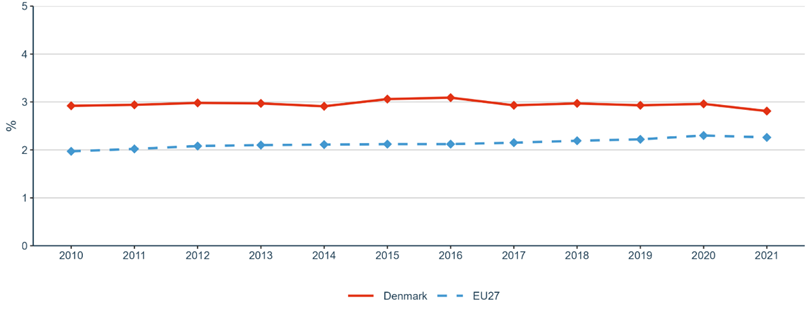


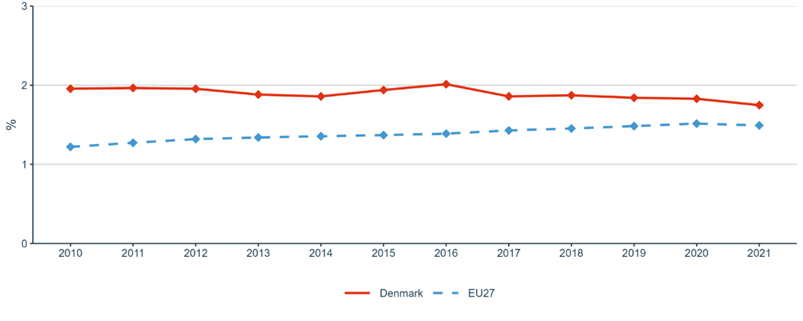
Priority 1: Deepening a truly functioning internal market for knowledge
Sub-priority 1.1: Open Science
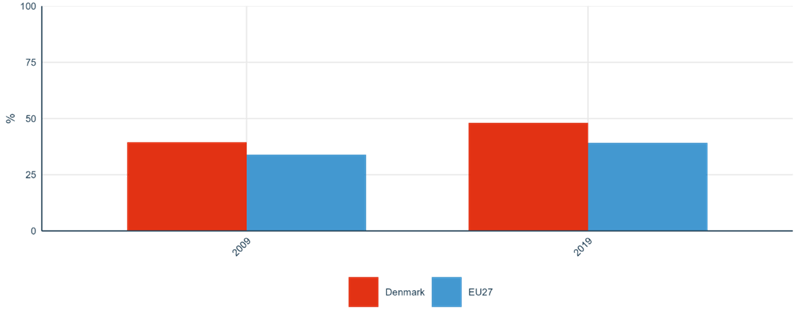
Sub-priority 1.2: Research infrastructures
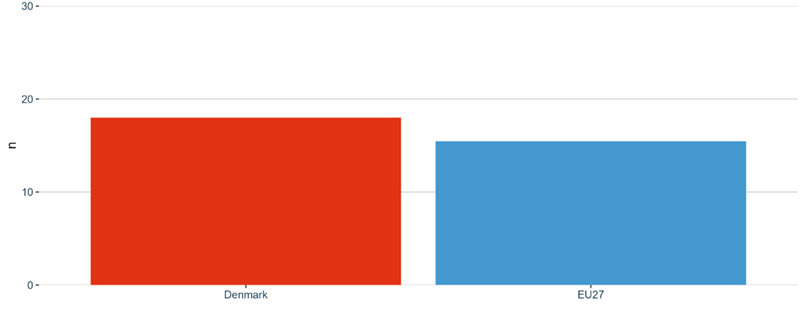
Sub-priority 1.3: Gender equality, equal opportunities for all and inclusiveness


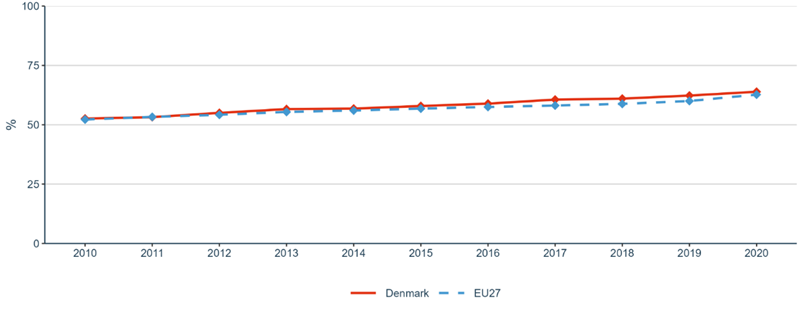
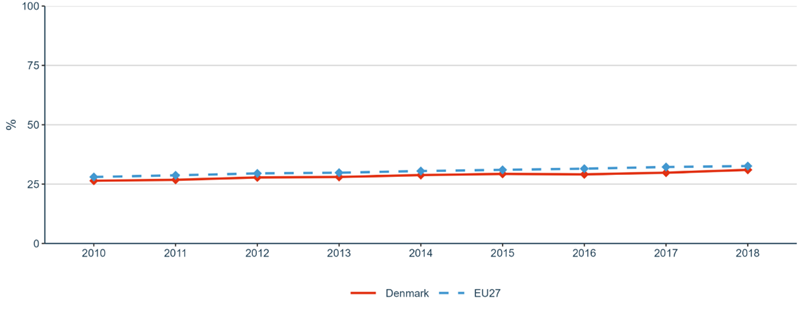
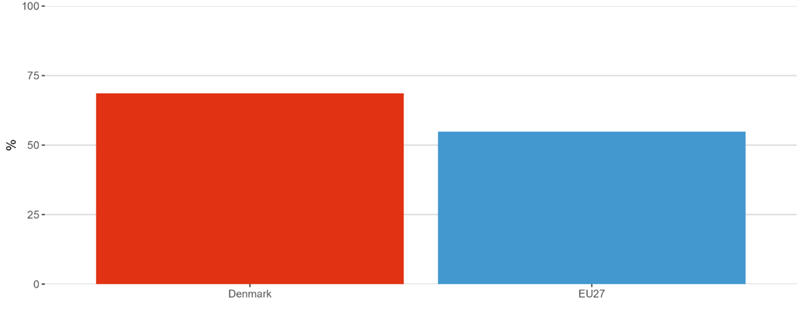
Sub-priority 1.4: Researchers’ careers and mobility and research assessment and reward systems

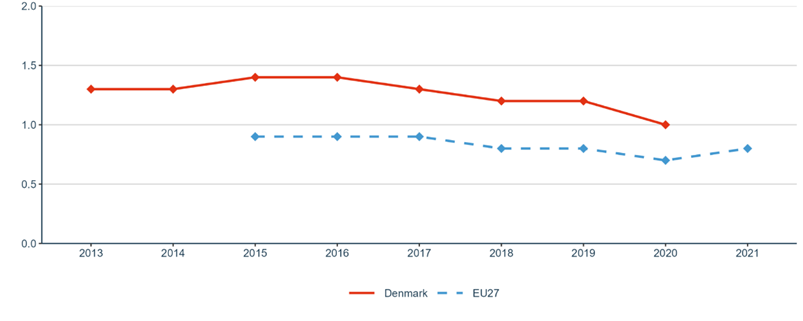

Sub-priority 1.5: Knowledge valorisation
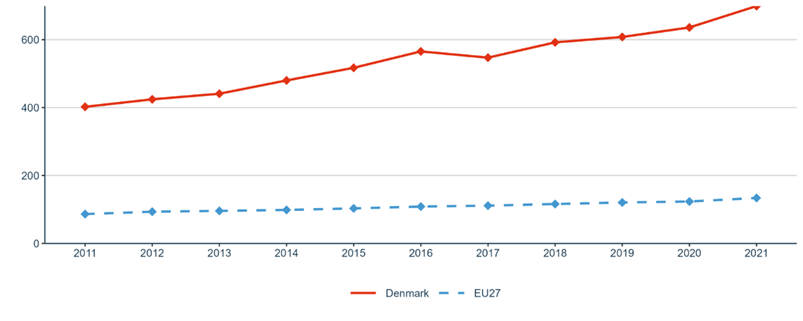
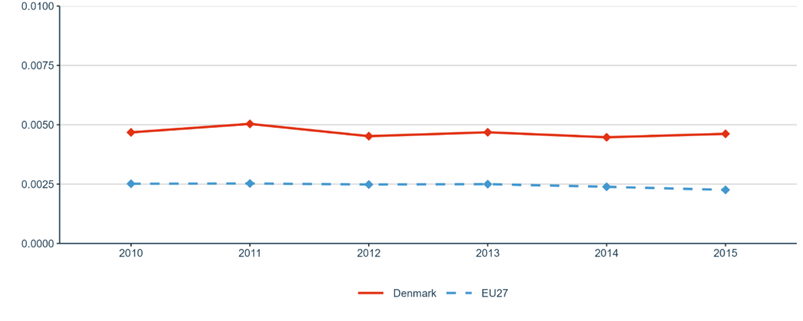
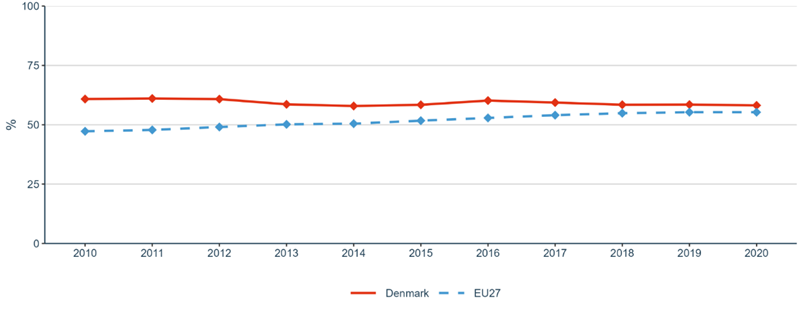


Sub-priority 1.6: Scientific leadership
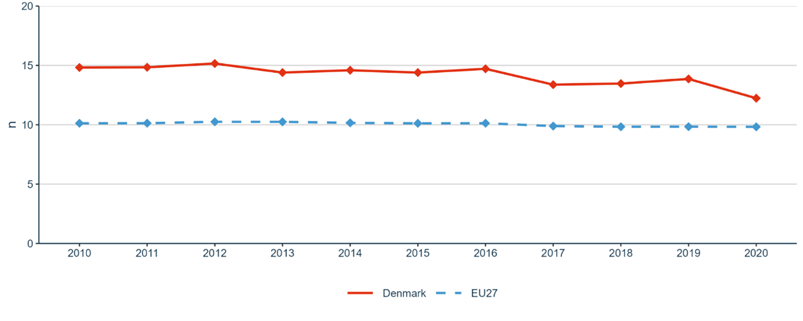
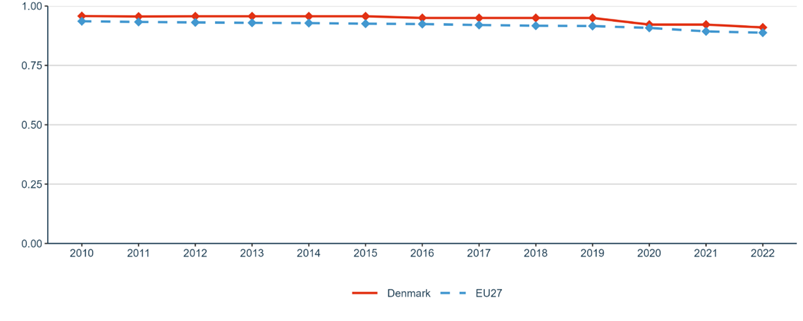
Sub-priority 1.7: Global engagement
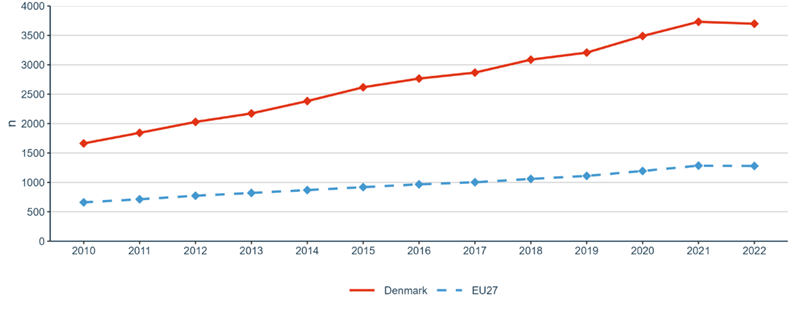

Priority 2: Taking up together the challenges posed by the twin green and digital transition, and increasing society’s participation in the ERA
Sub-priority 2.1: Challenge-based ERA actions

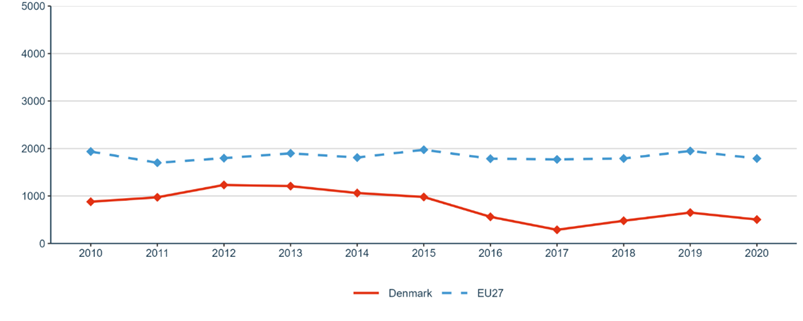
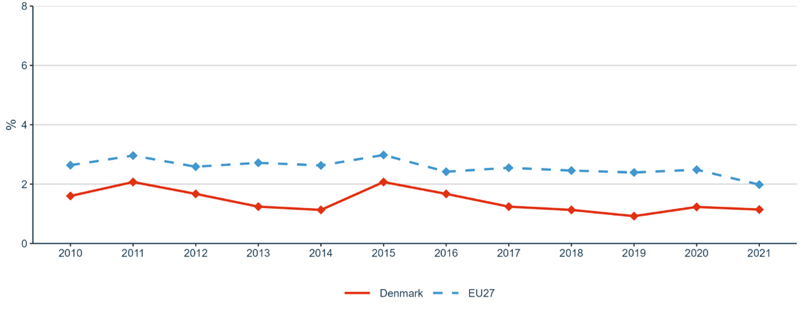
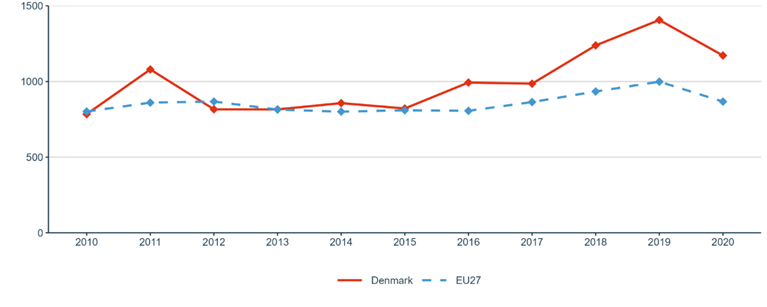

Sub-priority 2.2: Synergies with education and the European Skills Agenda
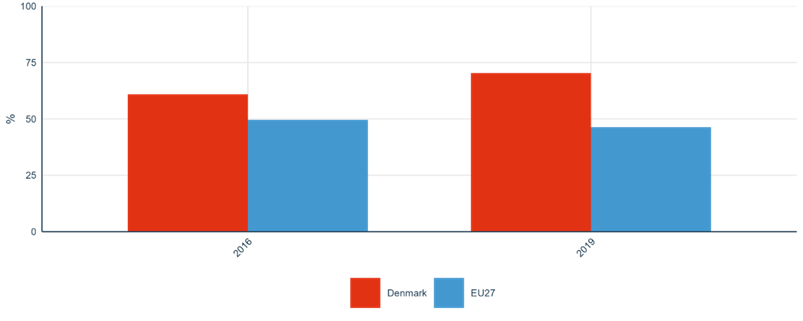
Sub-priority 2.3: Synergies with sectorial policies and industrial policies, in order to boost innovation ecosystems

Sub-priority 2.4: An active citizen and societal engagement in R&I in all its dimensions

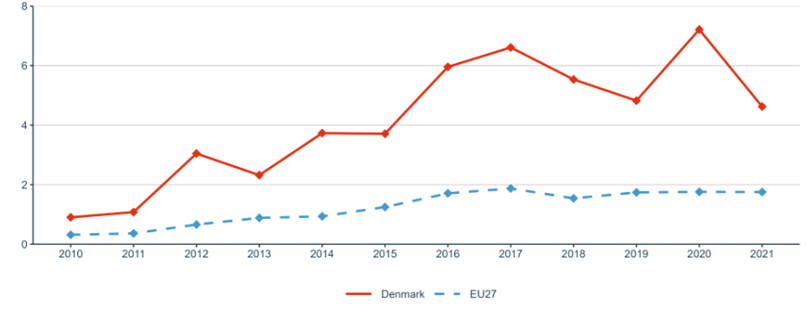
Priority 3: Amplifying access to research and innovation excellence across the Union
Sub-priority 3.1: More investments and reforms in countries and regions with lower R&I performance
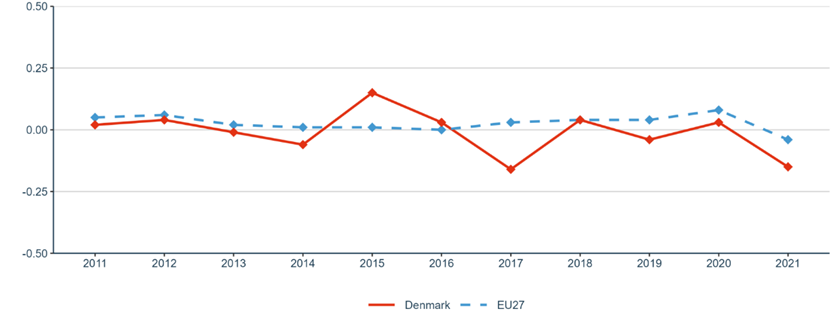
Priority 4: Advancing concerted research and innovation investments and reforms
Sub-priority 4.1: Coordination of R&I investments
